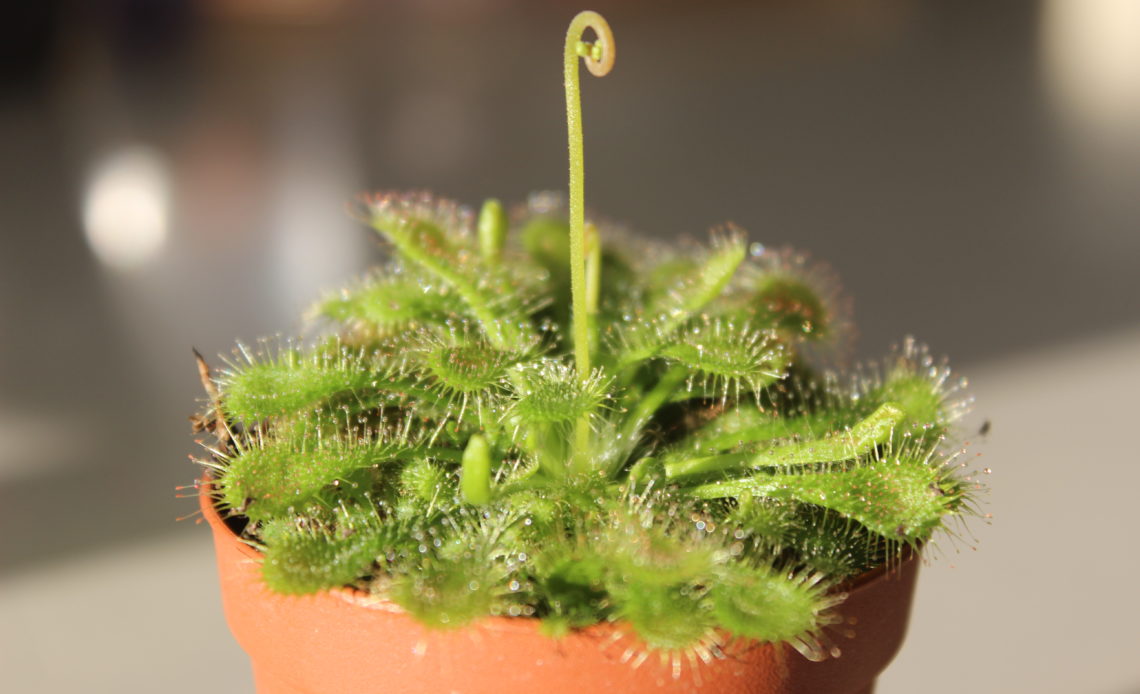
Drasera spatulata, otherwise known as, ‘Spoonleaf Sundew’ is the carnivorous plant that you never knew you needed. Its easy care and beautiful growth makes this the perfect starter plant for your carnivorous plant collection.
I frequently pick up plants that have been neglected and mistreated and when you take plants home of this kind, you could also be introducing unwanted pests into your plant collection. One pest I find myself battling is the annoying fungus gnat. You will find these bugs living in the soil of overwatered plants sitting on the clearance shelf.
The Spoon-leaf Sundew to the rescue. This plant is perfect for combating those annoying, little bugs flying over your plant gang. I realize that carnivorous plants can be intimidating due to their special needs, but in all honesty, the Sundew isn’t all that difficult to care for. Once you have them set up in the right soil, with some bright light, they are good to go!
Spoon-leaf Sundew Care:
Sundew Soil:
Like all carnivorous plants, the Sundew does have special soil needs. These plants are found in bogs and water logged swamp areas and do not take well the regular potting soil. A mixture of 50% sphagnum moss and 50% perilite or silica sand is all you need to get your plant to flourish. Also, there is no need to fertilize. In fact, fertilizer will be the end of your Sundew partnership. These carnivorous plants get all their “nutrients” from the bugs they catch.
Sundew Water:
This step takes a little bit of extra effort, but these plants will not take to regular tap water. Distilled water or rain water is the only way to keep the Spoon-leaf Sundew in good shape. They need to be kept constantly wet, so I keep my Sundew sitting in a small dish of distilled water at all times. If the dish goes dry for a day or two, no worries. The Sundew will forgive you.
Sundew Light:
Like all carnivorous plants, the Spoon-leaf Sundew likes bright light and warm temperatures. Unlike the Venus Fly Trap, these plants aren’t super fussy about location. Just keep them in front of bright indirect light and don’t let the temp dip below 45 degrees Fahrenheit. When kept in bright light, the Sundew will turn a lovely shade of red, but don’t let it get scorched but hot direct sun.

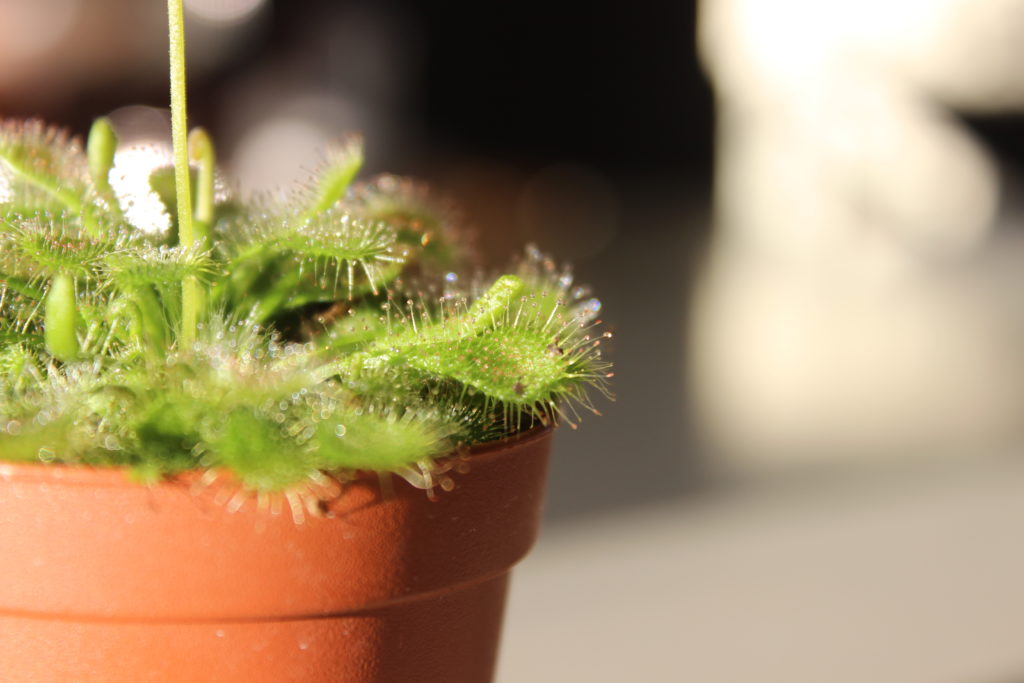
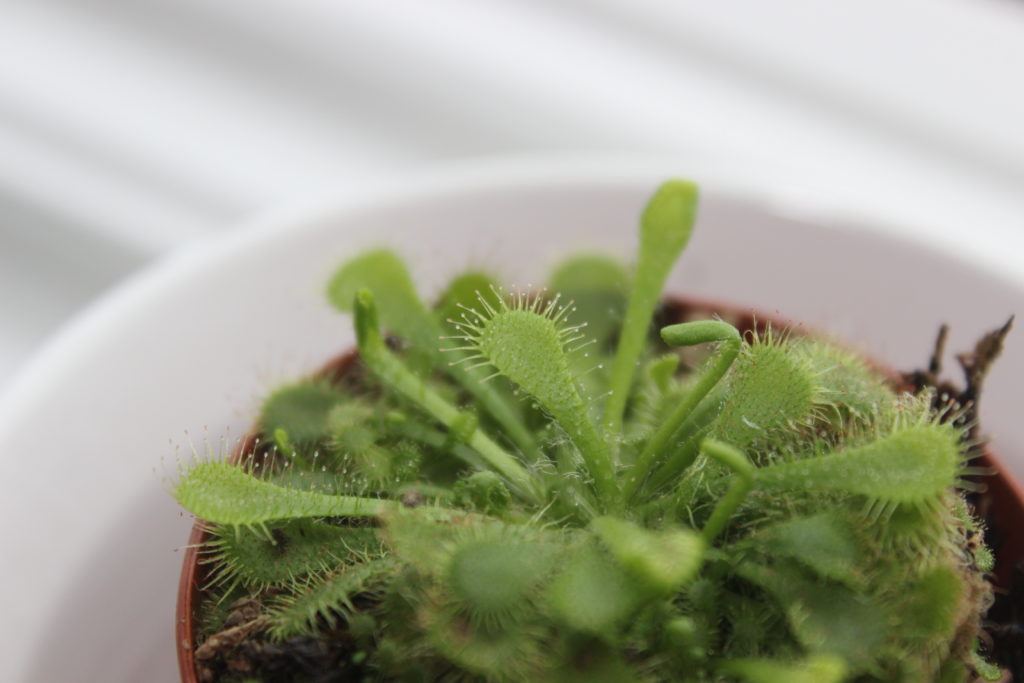
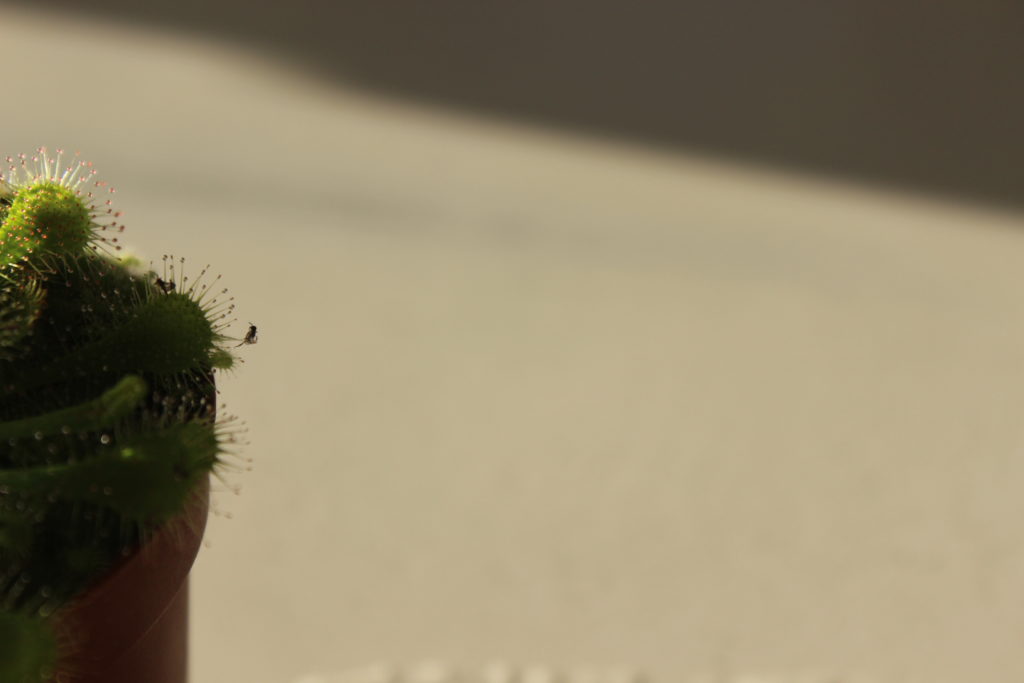
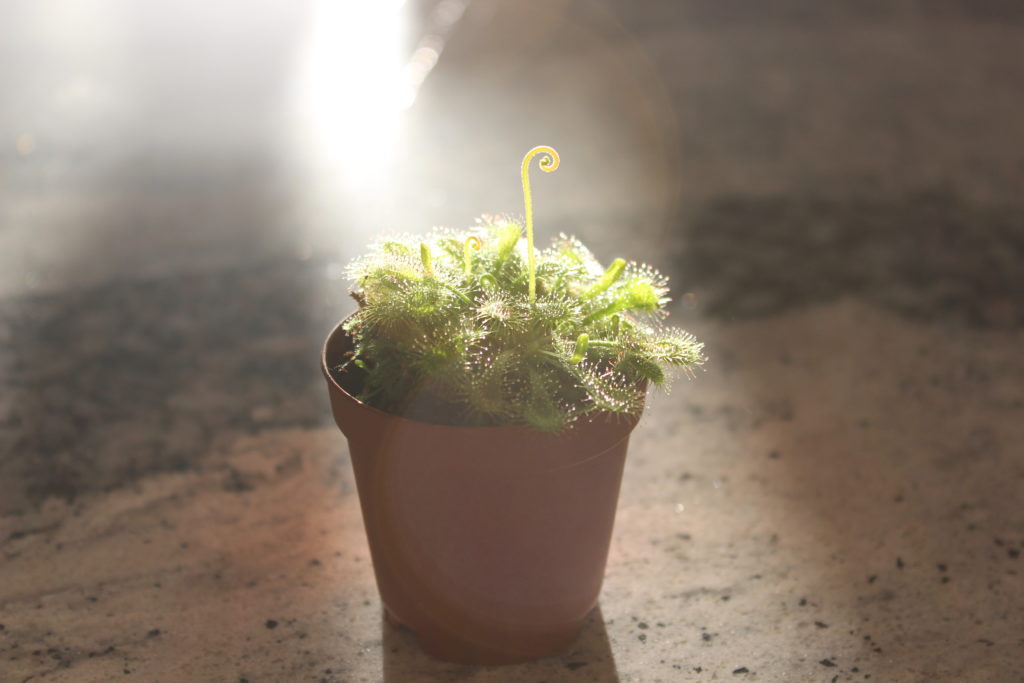

2 Comments